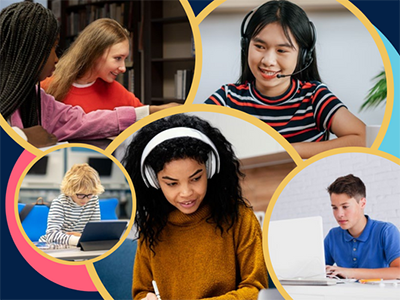How High-Impact Tutoring Can Unlock Student Growth
Watch the RecordingListen to the Podcast
One of the biggest issues facing our students is education inequity. When students don’t have the resources they need, it’s often harder for them to succeed.
In the edLeader Panel “High-Impact Tutoring Unlocks Student Growth: Results from 283 Districts with 98,000 Students,” JoinIn Ventures Founder Dr. Erin Devers and Vice President of Product and Impact for FEV Tutor Daniel Hebert addressed this serious issue and how high-impact tutoring can close the gap students face.
Dr. Devers started by explaining what education inequity is and how it affects K-12 students. education inequity is when students of different economic levels experience different levels of access, resources, and quality. She stated that this is not a new concept, but it is one that became much worse with the COVID-19 pandemic.
Before the pandemic, students were steadily improving in reading and math. Once the pandemic began, Dr. Devers noted, scores declined, especially for students from poorer backgrounds. Meanwhile, students from well-off districts experienced significantly less learning loss due to the fact they had greater access to resources, such as frequent computer usage, quiet work places, and available teachers.
This meant they only fell 3/8 of a year behind in school. Students from the poorest districts, however, typically fell 3/4 of a year behind, and students from average districts fell 1/2 a year behind.
Fortunately, this problem can be reversed. Dr. Devers shared a quote from the Harvard Graduate School of Education’s May 2023 report, “Any district that lost more than a year of learning should be required to revisit their recovery plans and add instructional time—summer school, extended school year, tutoring, etc.—so that students are made whole.” In other words, students need tutoring.
Hebert introduced viewers to high-impact tutoring (HIT), while Dr. Devers explained how tutoring in general is the most effective form of intervention for students and how HIT specifically is one of the few interventions to positively impact both math and reading. “Researchers have looked to see what are the important ingredients that would lead to learning and put those together into a tutoring intervention,” she said.
Dr. Devers defined HIT as “one-on-one or small-group teaching aimed at a specific goal,” with the group being up to six students. The key elements of HIT are a specified weekly time commitment, usually two to three times a week during school hours; a strong relationship between the student and tutor, with the tutor providing feedback to the student; and an alignment with the curriculum, which will help the student retain what they learn in class.
Dr. Devers noted that if the school can have the tutoring intervention during the school day, then it can be twice as effective as after-school tutoring. She added that by making HIT part of a school day, students who might normally have difficulties accessing tutoring, such as poorer students and students with after-school commitments, are able to get the benefits.
In addition to this, students need to have their progress monitored so they know what their next steps should be. Standardized measurements such as NWEA or STAR can be used to accomplish this. Furthermore, the background of the tutor matters. Any tutoring is beneficial, but tutoring provided by trained teachers yields the best results.
Dr. Devers credited HIT’s targeted nature with its success. “It’s personalized, it’s on the topic that the student is already discussing and facing, and so it’s designed to meet the student where they already are, which is in a school in a district.” When HIT is designed to meet students’ needs, they feel supported and confident, which helps them become engaged and improve academically. Furthermore, students who participated, consistently attended sessions, and were below grade level showed more improvement than their peers.
Education inequity is a serious problem, but there is a solution. High-impact tutoring has been shown to greatly help students by providing them with resources they normally wouldn’t have, and when students have what they need, they can thrive.
Learn more about this edWeb broadcast, “High-Impact Tutoring Unlocks Student Growth: Results from 283 Districts with 98,000 Students,” sponsored by FEV Tutor.
Watch the RecordingListen to the Podcast
Join the Community
Accelerate Learning is a free professional learning community that helps educators learn and share ideas for meeting students where they are in their learning and accelerating their progress.
FEV Tutor is the leader in 1:1 high-impact tutoring for K-12 schools, districts, charter schools, and education organizations nationally. Since 2010, our targeted tutoring intervention has focused on driving usage with priority student cohorts in order to accelerate learning outcomes and growth for the hardest to reach, low-performing students. Grounded in research on effective tutoring principles and instruction, FEV Tutor is ESSA-approved and Digital Promise-certified. For more information on FEV Tutor, visit www.fevtutor.com
Article by Jon Scanlon, based on this edLeader Panel.






Comments are closed.